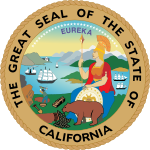| Elections in California |
|---|
 |
California Proposition 15 was a failed citizen-initiated proposition on the November 3, 2020, ballot. It would have provided $6.5 billion to $11.5 billion in new funding for public schools, community colleges, and local government services by creating a "split roll" system that increased taxes on large commercial properties by assessing them at market value, without changing property taxes for small business owners or residential properties for homeowners or renters.[1] The measure failed by a small margin of about four percentage points.[2]
Proposition 15 would have amended the Constitution of California to adjust the limitations on property taxes introduced by 1978 California Proposition 13. It would have changed the property tax assessment on owners of commercial properties with a combined value of greater than $3 million to pay property tax based on the property's current market value, not purchase price. The measure would have exempted all agricultural land and small businesses that owned their own properties. It also included a small business tax cut by increasing the small business personal property tax deduction. All residential properties for homeowners and renters were exempt and other special circumstantial exemptions were provided under the proposition, such as an exemption for rental units or properties with a higher value in which the owner does not in the property (in this case, the tax would have been based on the market value of the property starting in 2022).[3]
According to the official ballot summary, Proposition 15:[1]
- Would have raised $8 billion to $12.5 billion in new funding—$6.5 billion to $11.5 billion after the costs of implementation—in new funding.[3]
- First, funding would have gone to the state to supplement for the decreasing tax revenue.[4]
- Only 60% of the remaining funding will go to local government services such as public health, safety and fire prevention and only 40% of the remaining funding will go to K–12 public schools and community colleges.[3][4]
- Would have required commercial properties worth $3 million or more to be taxed at fair market value—not purchase price
- Would have exempted small businesses, agricultural lands and residential properties for homeowners and renters
- Would have cut taxes for small businesses by reducing personal property taxes
According to the official voter information guide:[1]
- "A YES vote on this measure means: Property taxes on most commercial properties worth more than $3 million would go up in order to provide new funding to local governments and schools."
- "A NO vote on this measure means: Proposition 13 still stands—property taxes on commercial properties would stay the same. Local governments and schools would not get new funding."
It was one of two ballot measures on the 2020 California ballot that would adjust the original Proposition 13, the other being Proposition 19.[4]
- ^ a b c "Proposition 15 Official Title and Summary | Official Voter Information Guide | California Secretary of State". voterguide.sos.ca.gov. Retrieved 2020-10-02.
- ^ Hooks, Chris Nichols, Kris. "What We Know About California Proposition Results". www.capradio.org. Retrieved 2020-11-11.
{{cite web}}: CS1 maint: multiple names: authors list (link) - ^ a b c Bessey, Marshall (2019). "Proposition 15: Commercial Property Tax Assessments: 'Split Roll'". roseinstitute.org. Retrieved 2020-11-08.
- ^ a b c "California Proposition 19, Property Tax Transfers, Exemptions, and Revenue for Wildfire Agencies and Counties Amendment (2020)". Ballotpedia.
© MMXXIII Rich X Search. We shall prevail. All rights reserved. Rich X Search

